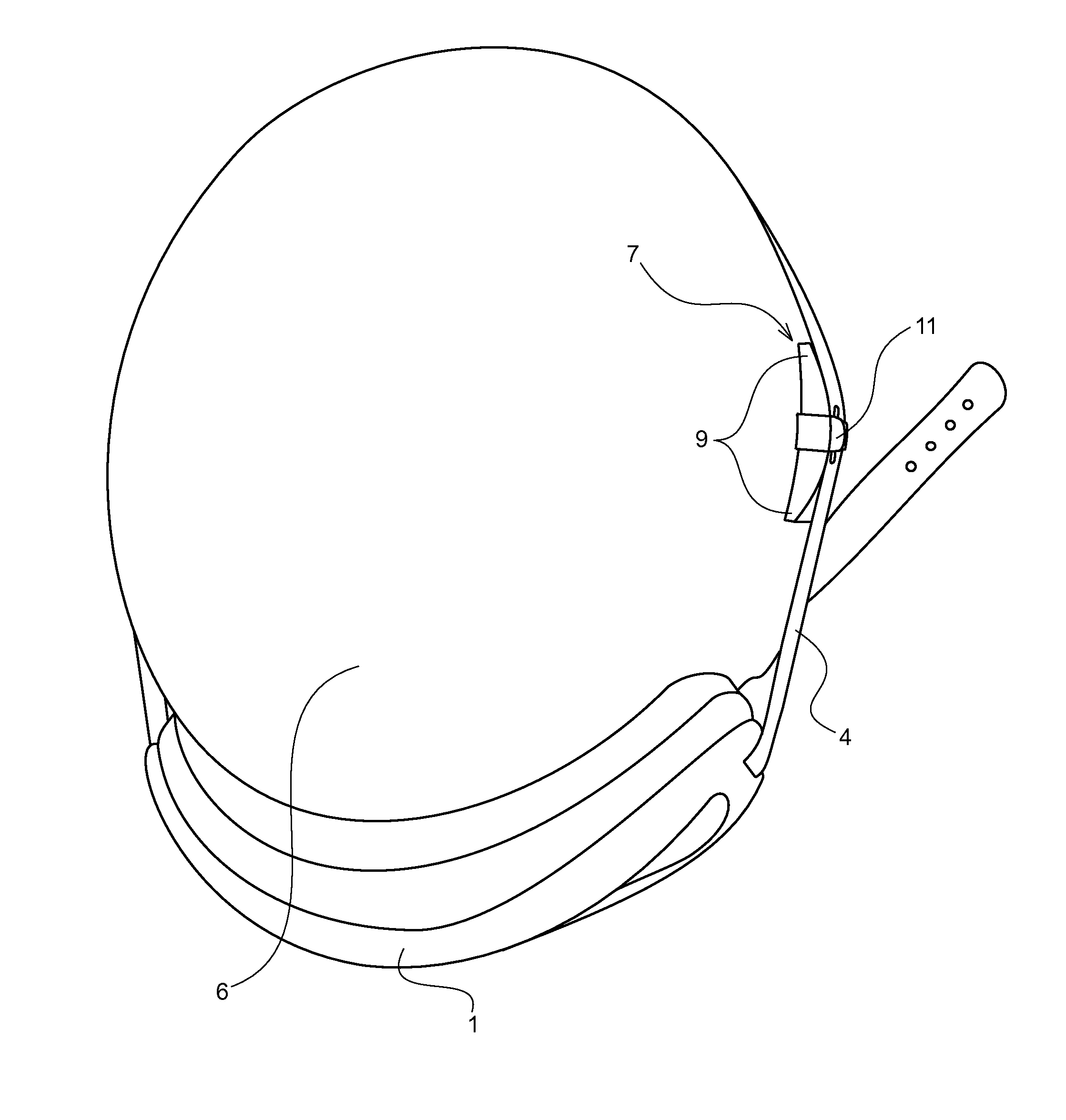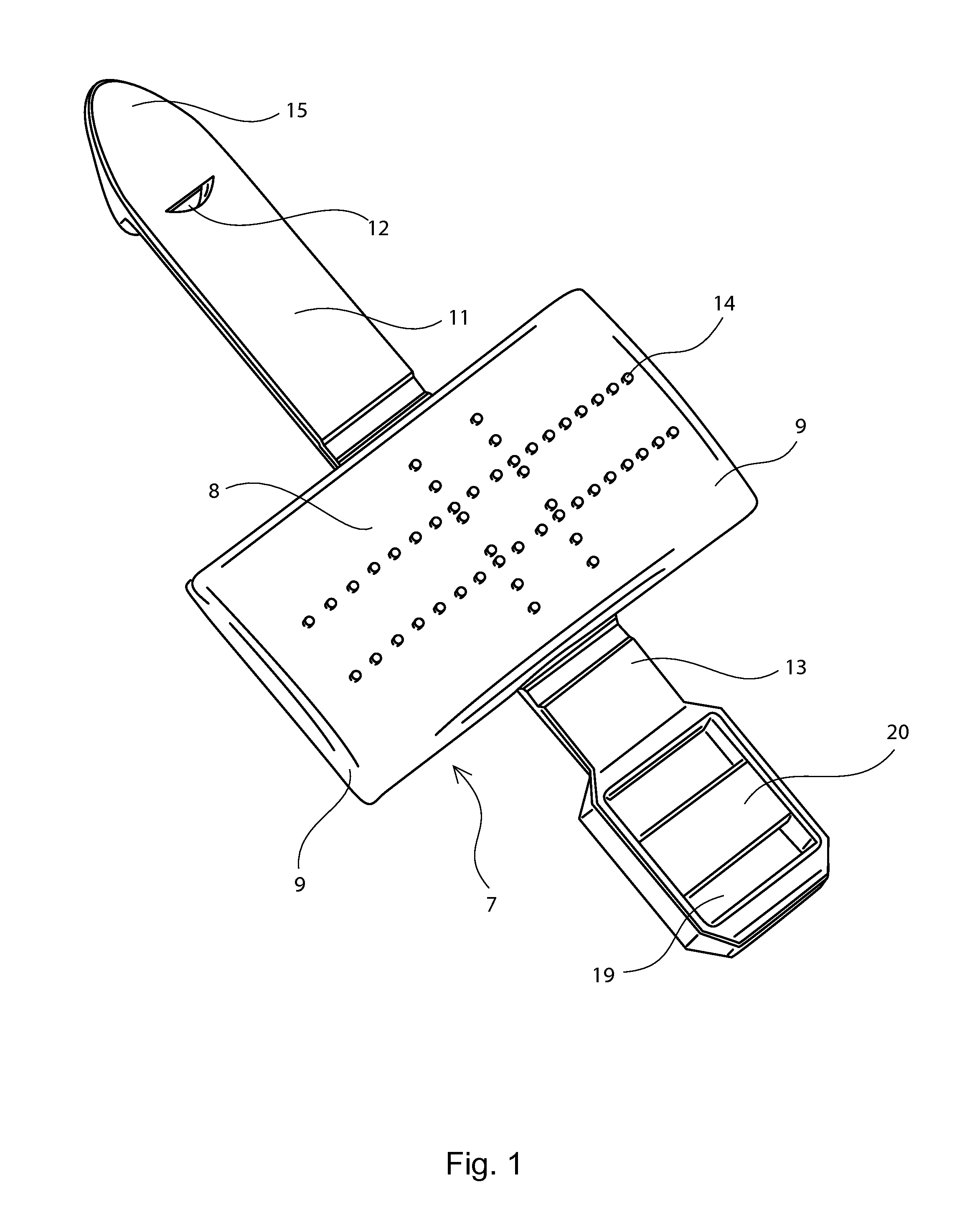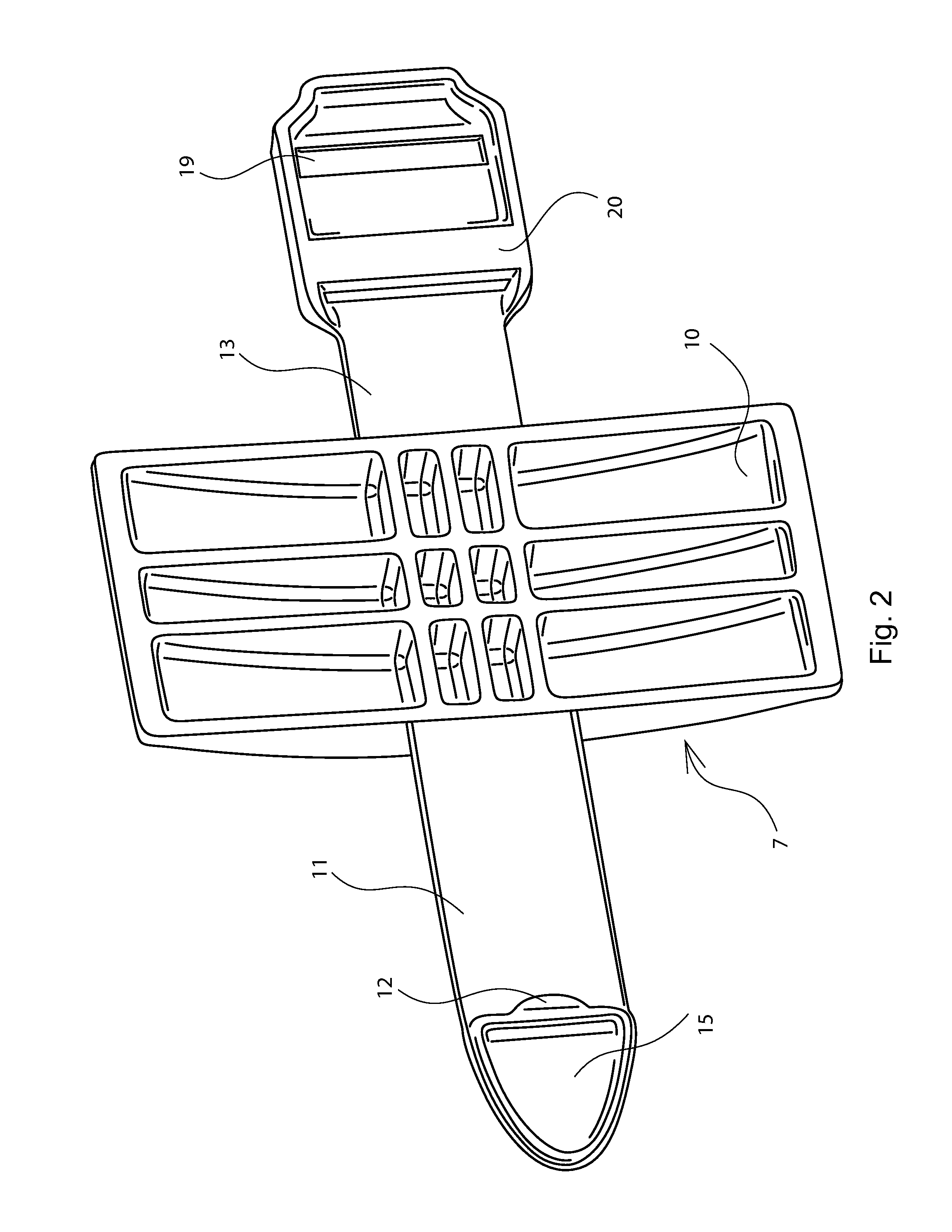There are many causes of nasal obstruction.
In particular loss of support often involves the external valves and / or prolapse of the
nasal tip of the
nose.
In some situations, nasal obstruction may force a subject to breathe through the mouth, which will exacerbate snoring due to oral-pharyngeal tissue vibrations.
A limitation of such tapes are they are designed to be used one time and disposed and cannot be relocated easily for comfort or to adjust to improve
nasal valve opening because
adhesive tape loses its ability to adhere if removed and reattached.
Hence they are expensive, environmentally objectionable, cannot be relocated easily, are not reusable, and on a personal level subjects often stop using them because they peel off under oily or sweaty
skin, thereby defeating their purpose to improve nasal air flow during sleep or with physical activities.
They can cause discomfort when peeled off, and individuals who use facial lotions, cannot achieve good adherence to their
nose and / or face with these adhesives.
Additionally subjects using these tapes may notice transient swelling of the nasal alae and vestibules, which is unsightly and may be caused by venous
pooling and reduced venous outflow from the nasal tissues while wearing the tapes.
It is costly as a disposable, can cause whistling through one way valves during
respiration, may not work if the air pressure seal is broken by
mouth breathing and users express discomfort noticing that before falling asleep they cannot breathe normally because of increased expiratory resistance.
They also cannot be relocated and reattached easily as
adhesive tape loses its adherent ability once removed and then reattached.
The
adhesive attaching means interfere in adjustment of the eyeglass for optimizing
visual acuity once the adhesive attachment of the nasal
dilator is in place.
Also the adhesive nasal
dilator can only be used one time.
As will be best understood with the description of the benefits of the present invention, the disadvantages of structure FIG. 5 in U.S. Pat. No. 8,051,850 for a nasal
dilator are: (1) it employs a completely circumferential elastic head band that can be displaced by user head movement and thus makes it difficult to maintain forces for nasal dilation to either or both sides of user's
nose; (2) it does not include a mound that provides added moments of forces to enhance opening
nasal passages (3) it does not include a holding means for mound(s) to maintain mound positioning; and (4) it does not include means to adjust and / or relocate and / or reuse contact pads to same or different location(s) in relation to user's nose and / or face and / or head as needed to improve nasal patency and / or
patient comfort.
The adhesives lose their attaching means once removed and repositioned, and both adhesives and friction means cause difficulty maintaining positioning when an active exerciser sweats or experiences facial distortions during exercise which will lessen adherence to a user's face.
As a result, there remains numerous commercial disadvantages with these various devices employing tape, friction holding means or other adhesive elements.
The problems and limitations with these devices include: (1) they behave as a
foreign body inside the nose and may cause discomfort,
itching, and in some subjects,
reflex sneezing.
It employs a completely circumferential elastic head band that can be displaced by user head movement and thus makes it difficult to maintain forces for nasal dilation to either or both sides of user's nose.
Moreover, some users cannot tolerate adhesives because they cause contact
skin irritation and users who apply facial creams or lotions may have difficulty keeping adhesive tape in place.
Once the adhesive is applied, then adjusting the
mask for comfort or to improve opening the valves becomes difficult, as most adhesives curl up or lose their adherence ability when they are pulled off and reapplied.
In essence, this category of devices does not have an easy reversible adjustable, repositionable or reusable means to obtain an optimal comfortable lateral pull to open the nasal valves nor can it be reused without changing the adhesives.
This nasal
valve opening device can attach to eye glasses directly to the device using adhesive means to attach to a user's face that doesn't permit adjustment, and as such, it is apparent the device must remain permanently attached to the
skin of the user which would otherwise preclude visual optimization for the user.
The adhesive resilient spring may improve external nasal valve patency but it does not provide for an adequate lateral vector pull to open the internal and external nasal valves.
Therefore, it has the same limitations using adhesive tape as it cannot be reused or relocated easily and / or adjusted for comfort to improve
nasal airway function.
Its disadvantages are: (1) it applies inward posterior forces onto the nose and doesn't take
advantage of the Cottle effect to maximize nasal vestibular and nasal valve patency; (2) it can reduce
nasal vestibule volume by applying direct posterior vector pressure on the nose; and (3) the overall pressure applied to the nose creates user discomfort especially during sleep.
Rhinoplasty may actually cause nasal
airway obstruction when
cartilage and other supporting structures are altered or resected as part of the procedure.
Learning to breathe through one's nose requires constant conscious training which is not applicable to sleep and hence would not likely be effective for most individuals.
 Login to View More
Login to View More  Login to View More
Login to View More 


